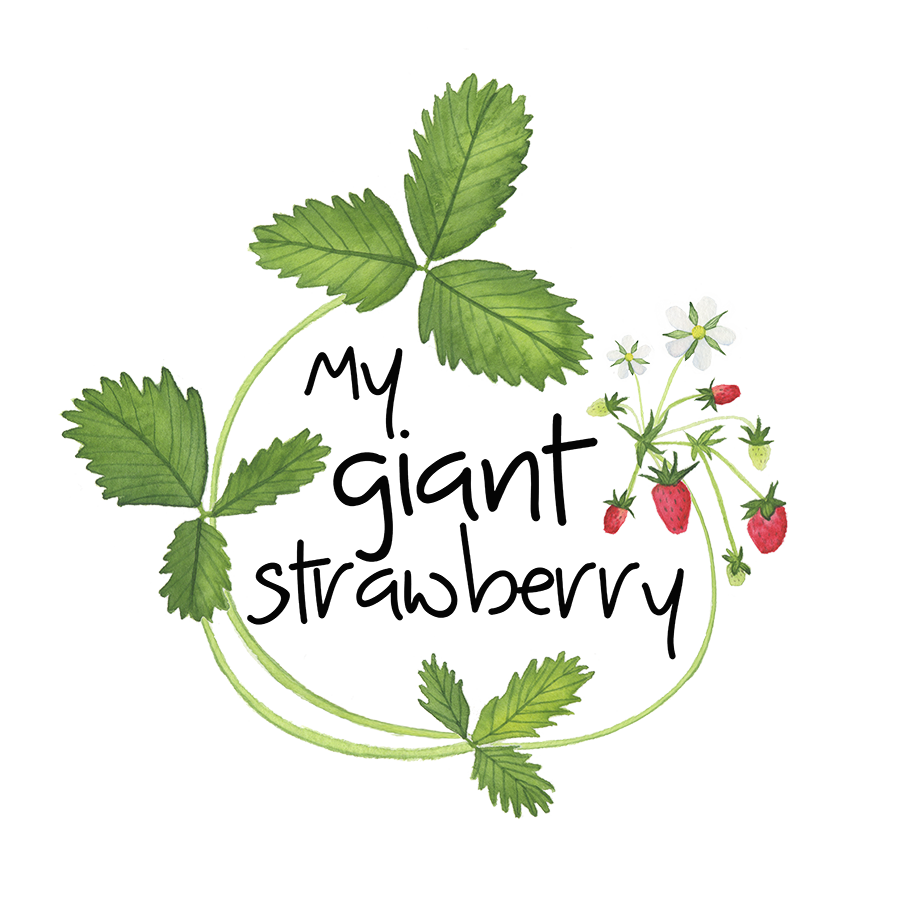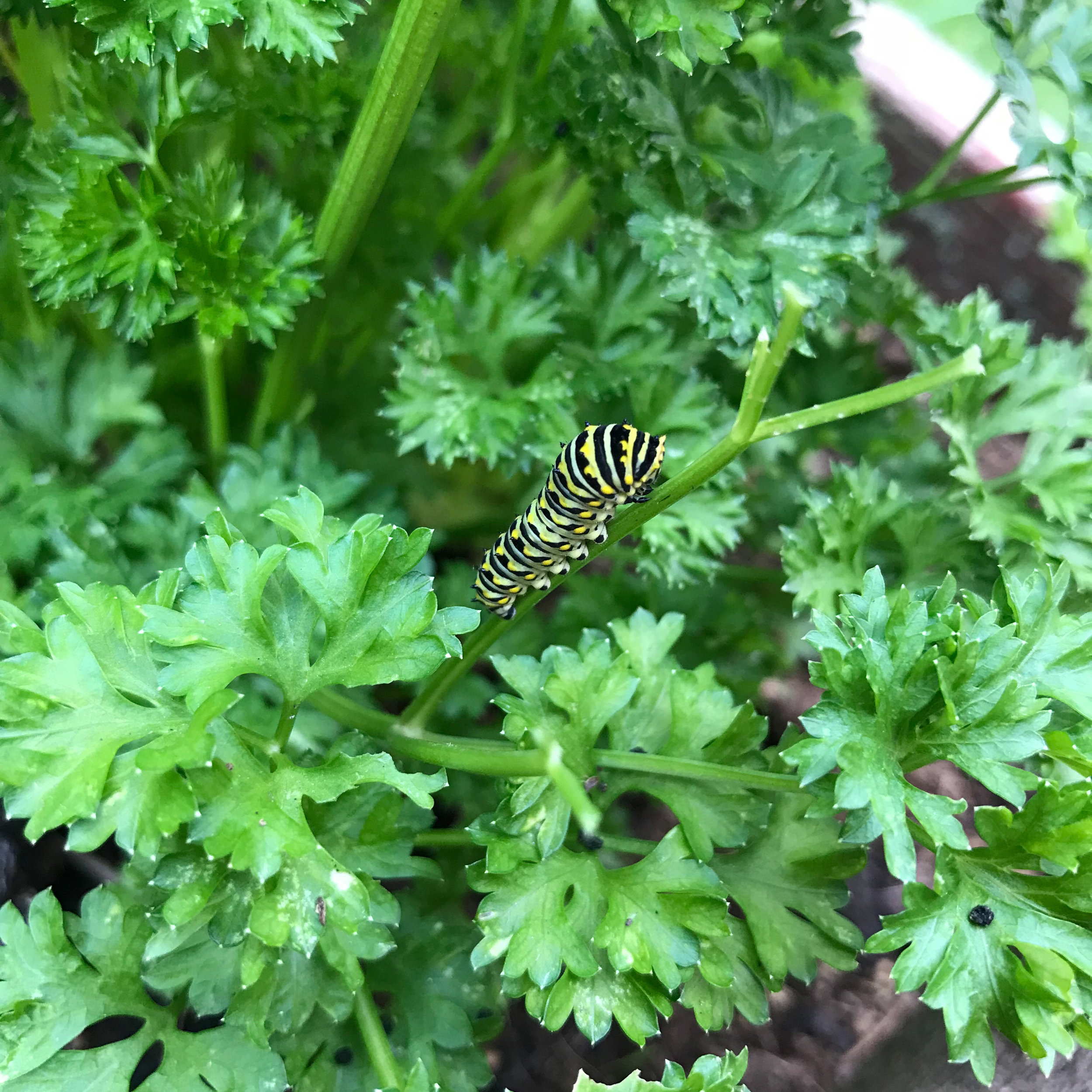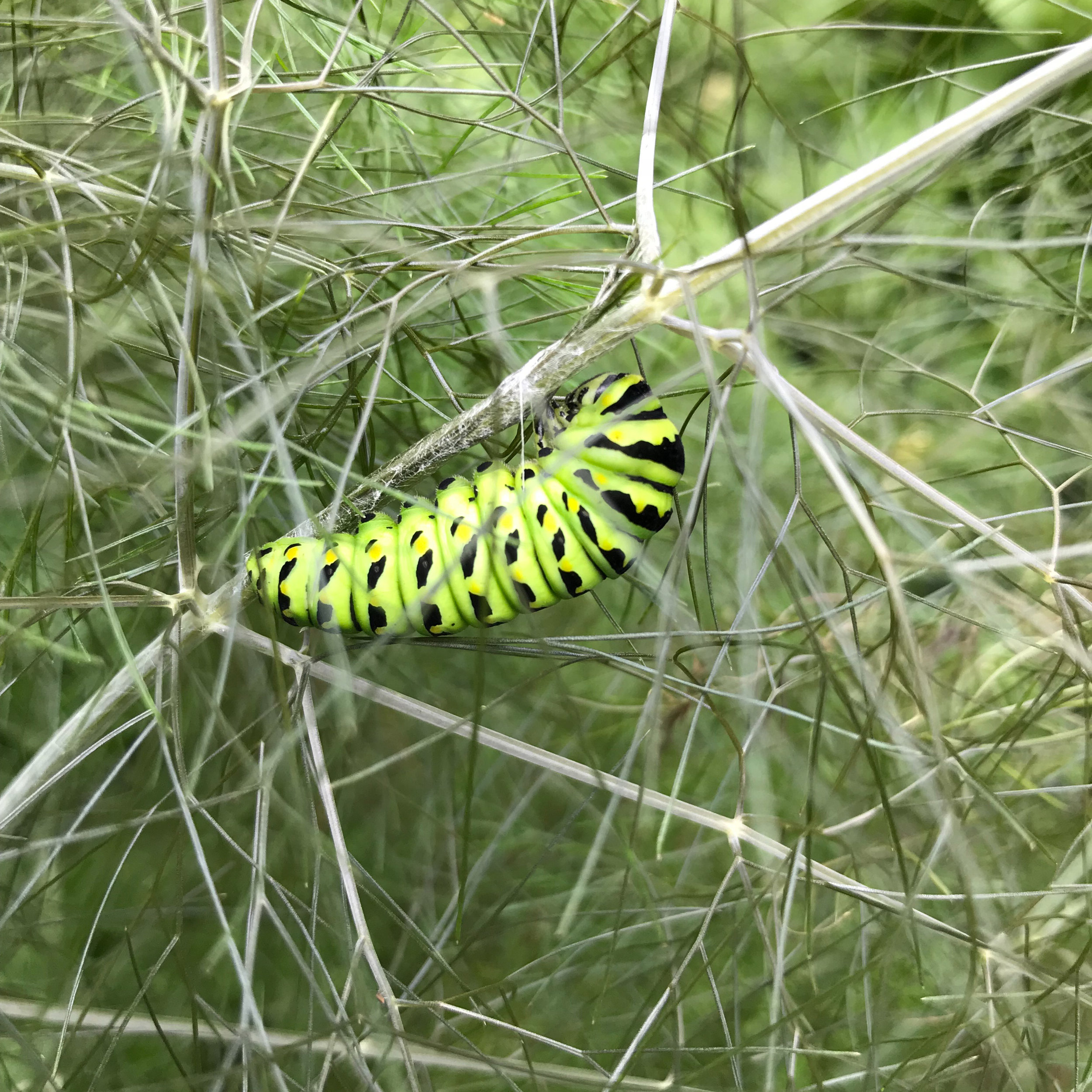Magic in the Garden, Part 2: Black Swallowtails
Back in July I spotted some black swallowtail caterpillars on the parsley in my garden. I was thrilled to see them. I think butterflies are some of the most magical creatures in the garden.
These caterpillars were pretty small and I didn't recognize them at first. Their early phase doesn't look at all like their later ones*. In fact, at this point they looked kind of like bird droppings, a natural defense as protection from predators.
I found five caterpillars in all and I watched them obsessively, checking the herb bed multiple times each day to see their progress.
Black swallowtail caterpillars feed on parsley, dill and fennel as well as things like carrots and queen anne's lace. Some people consider them a nuisance and other people plant their favorite foods to attract them to their gardens. Although "my" caterpillars ate a lot, they left plenty of parsley for me.
As they grew their colors changed quite a bit and they became more recognizable.
Slowly their numbers dwindled. I don't know if they were just hidden in the foliage or if they left or were eaten. One day after we had a big storm I couldn't find a single caterpillar, but I never stopped looking.
A couple days later one appeared on the opposite end of the herb bed where it had crawled up a fennel stem.
It didn't seem to be eating much or moving around. It was so chubby! I figured it was getting ready to pupate.
I looked for information about the process, wondering how long it would take for the caterpillar to pupate and how long it would spend in the chrysalis. As I mentioned last week, I learned that black swallowtail caterpillars form a silken thread to hold them in place while they're in the chrysalis.
I learned something else, too. They don't form a chrysalis to enclose their bodies the way a moth spins a cocoon. When they shed their exoskeleton for the last time as a caterpillar it reveals the chrysalis beneath.
I was fortunate enough to catch it happening.
The caterpillar wiggled and wiggled and the outer layer peeled back, almost the way you or I would peel off a sock.
Once it began the process was finished quickly.
And by the end the transforming butterfly was still attached to the fennel stem with the silken strand. It continued to wiggle around for a while before settling down to rest.
I wasn't sure if the butterfly would emerge this year or not. If it's late in the summer, black swallowtail butterflies will remain in the chrysalis overwinter.
How late is late? I couldn't find a definitive answer. With our August weather feeling more like September I wondered if this would be considered late.
I checked the chrysalis every day. Not much changed. But then about two weeks later I noticed it had gotten darker and I could just about make out the patterning of the wings beginning to show through. I knew it wouldn't be long before the butterfly emerged.
Tuesday morning was cold and wet and dark. I worked in my studio a bit before going out to check on the chrysalis. 16 days after the caterpillar shed its skin to reveal the chrysalis , it was empty.
Why had it chosen such a bleak day to emerge?
At first I didn't see the butterfly anywhere. I was looking too high. Matthias spotted it nearly on the soil at the bottom of the plants in the herb bed.
The day remained wet and dark and cold. I kept running outside to check on the butterfly. It stayed where it was, perhaps waiting for the sun or a rise in temperature. When I left for my job at the library it was still there, but by the time I came home it was gone.
I keep hoping that I'll be in the garden and see a black swallowtail fluttering around my flowers, but so far, I haven't. And that's the funny thing. I haven't seen them in the garden at all this summer, though the presence of the caterpillars proves there had to be at least one. I'm grateful I was able to witness the life cycle in all its magic. Perhaps next year I'll raise some caterpillars indoors.
What about you? What magic have you witnessed lately?
*Each phase of a caterpillar's development is called an instar and is measured by the shedding of the caterpillar's exoskeleton.










